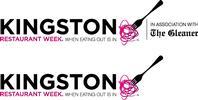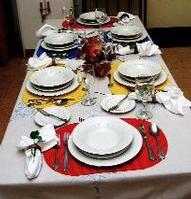Marigold Harding, Contributor



Left: Harding - Contributed. Right:
This is the correct setting for a basic dinner. The bread and butter plate with the butter spreader sit to the left of the place mat and the water glass to the top right. Around the plate and bowl are the utensils, with the soup spoon at the right of the dinner knife and the salad fork to the left of the dinner fork. The napkin is placed at the left of the leftmost fork, and the dessert fork sits before the bowl. - Winston Sill/Freelance Photographer
As we gear up for The Gleaner-sponsored Kingston Restaurant Week (KRW), come mid November, here are some tips for those who will be dining out - perhaps for the first time.
Table Setting
All tables are set in a manner which allows comfort and convenience for all diners. Table setting indicates what may be served and how many courses. Beauty is essential but secondary to the smooth and comfortable service of the meal. In formal dining, a menu card indicates the courses you will be served, but if there is no menu card the place setting tells the number of courses. An informal table setting calls for only a few utensils. Here are two basic rules:
Utensils are placed in order of use starting from the outside.
Forks go to the left of the plate - knives and spoons to the right (there are a few exceptions).
The typical place setting for an informal three course dinner will include:
PLATES
Dinner plates: the plate and the flatware should be placed about one inch from the edge of the table.
Salad plate: is placed to the left to the forks. If the salad is to be eaten with the meal, as is common practice, rather than before the meal, the salad plate is not necessary and served directly on the dinner plate.
Bread plate: with butter if used, is placed above the forks with butter knife resting on the edge.
Forks
Two forks placed to the left of the plate - the dinner fork which is the larger of the two is used for the main course and the smaller for the salad or appetiser. Because the salad is usually served first in an informal setting, the salad fork is placed on the outside left of the dinner fork.
Napkin
This can be folded or put in a napkin ring and placed either to the left of the forks or in the centre of the dinner plate.
Knives
The dinner knife is placed to the immediate right of the plate cutting edge facing inwards.
Spoons
Spoons go to the right of the forks
Desert spoons and forks
These may be placed horizontally above the dinner plate - the spoon at the top with the handle to the right and the fork below with the handle to the left.
Glasses
Glasses of any kind; wine, water, juice, iced tea are placed to the top right of the dinner plate.
Coffee cup and saucer
If served at the dinner table these are placed above and slightly to the right of the knives and spoons.
Table settings are planned and their components selected after careful consideration has been given to the type of meal and where it will be eaten.

